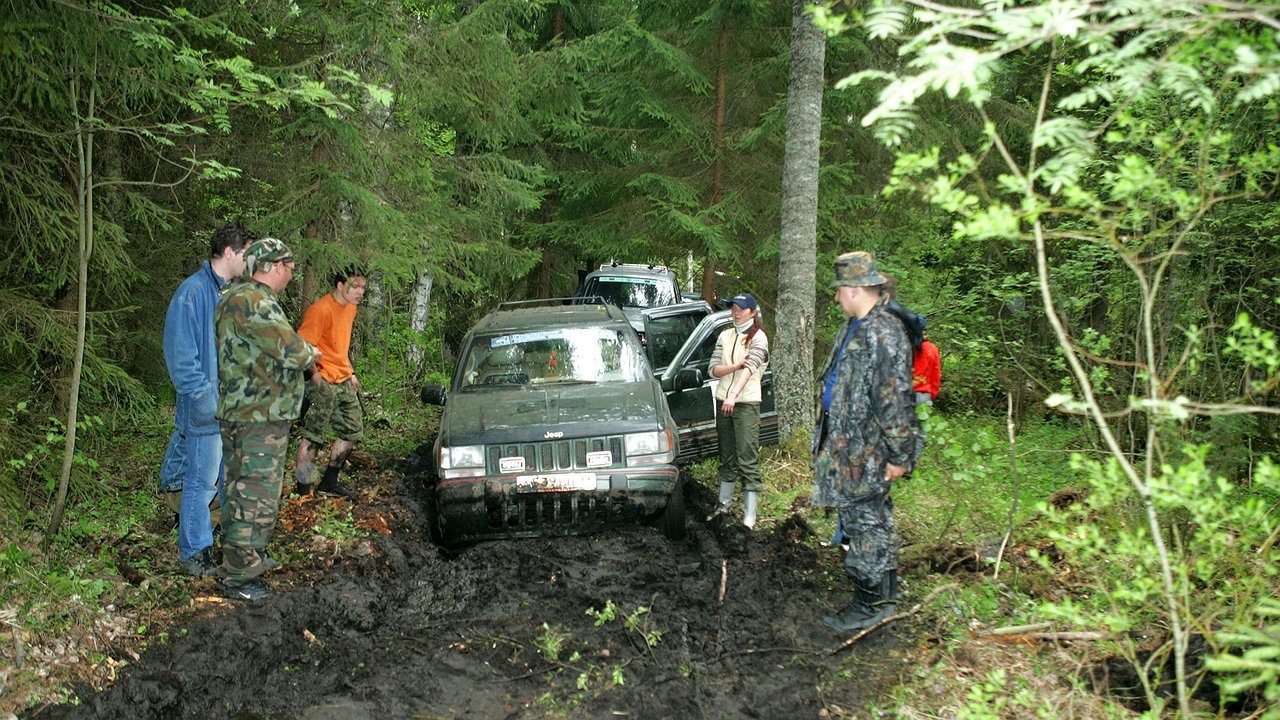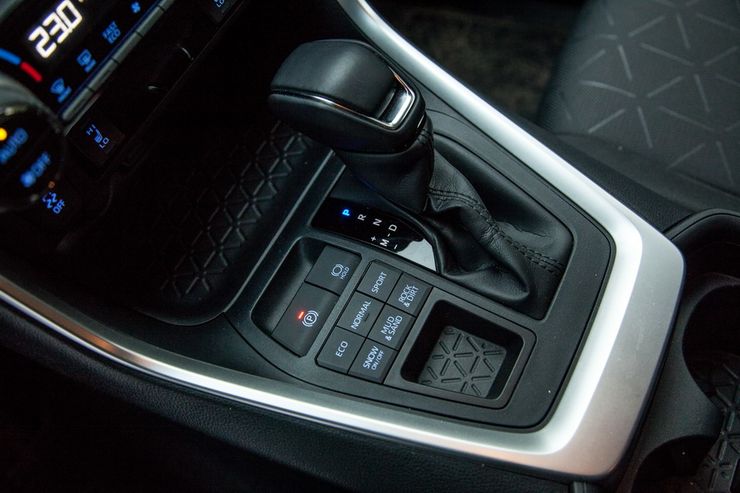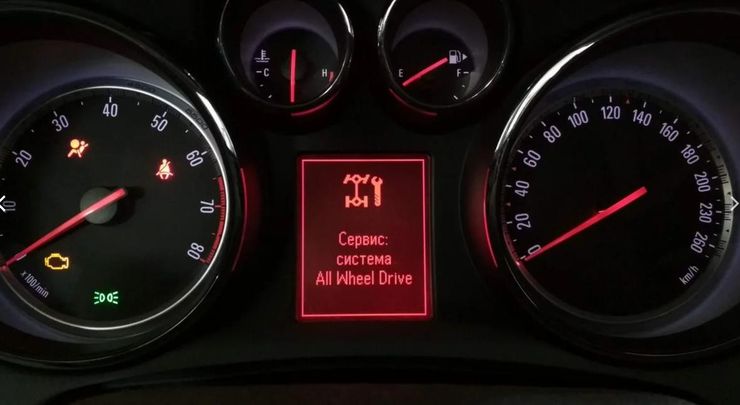Is it worth buying a used four-wheel drive car?
- July 7, 2023
- 0
An all-wheel drive car can give its owner a lot of pleasant moments. But that’s if it’s right. In older cars, all-wheel drive often wears out and becomes
An all-wheel drive car can give its owner a lot of pleasant moments. But that’s if it’s right. In older cars, all-wheel drive often wears out and becomes

The plug-in four-wheel drive AWD (All Wheel Drive) almost always uses only the front driving wheels and the rear axle comes into play only when needed. In fact, the car always runs in front-wheel drive, which ensures clutch durability. But there are exceptions. According to the principle of operation, the clutch resembles a clutch, only there are many discs and they are controlled not by the driver’s foot, but by a servo drive that compresses or decompresses the clutch pack. With their help, the rear axle is connected.
There are two types of such clutches, namely electromagnetic and hydraulic. The first type can be found on Nissan Qashqai, Murano, X Trail, Mitsubishi Outlander, Renault Koleos, etc. The most common car with an electromagnetic clutch is Duster. In the late 2000s, many admired the car’s capabilities, stating that the Murano clutch was “almost eternal”, but it later turned out that this was far from the case.
An electromagnetic transmission combines three clutches at once in its housing: electric, camshaft and friction. The first is an electromagnetic mechanism that activates the drive. The second controls the locking force, and the third – transfers the moment from one axis to another. Four-wheel drive works according to the following algorithm. When the engine is started, the electromagnetic armature engages the cam mechanism and the clutch is brought into working condition.
If all four wheels rotate normally while driving, the transmission’s input and output shafts are synchronized and the clutch remains in a disengaged state. But as soon as the wheels slip, the angular velocity of one of the axles changes and the clutch automatically locks. The cam mechanism at different node speeds of the shafts is clamped using balls in a special cage. They press on the base plate, which compresses the clutch pack through the bracket. The greater the difference between the rotation of the input and output shafts, the more the dog clutch presses on the clutch pack and the rear axle of the machine is connected.
The design of the electromagnetic clutch is quite reliable. However, if used incorrectly, the lifespan is drastically shortened. For example, an all-wheel drive transmission can be “killed” by an elementary non-compliance with the dimensions of the wheels. If you constantly drive on non-standard discs, and even with different tire profiles, the input and output shafts will not be able to rotate synchronously, even with straight-line movements. All-wheel drive will constantly engage, stressing the clutches and braking the rear axle, leading to severe clutch overheating and reduced life.
The clutch also does not like off-road activities. The cam mechanism doesn’t lock the clutches very well, causing them to slip and rub. The coupling is of course protected against overheating, but works with a delay if overheating has already occurred. Wear products get into the oil and contaminate the entire mechanism. As a result, the clutch pack may lose functionality by 100,000 miles. A broken clutch usually clicks on the cam mechanism balls and jerks are felt on the rear axle. You can also judge the condition of the four-wheel drive by the color of the oil. If it’s black and has a sediment, serious repair is overdue.
The second type of four wheel drive couplers uses a hydraulic method to attach the couplers. This design prevents the discs from slipping. The most famous systems were made by the Swedish company Haldex, which came under the control of the American BorgWarner. Swedish hydraulics are installed on Volkswagen, Audi, Skoda and Volvo, including crossovers Tiguan, Kodiaq, etc. Dynamax hydraulic clutches from Magna are already used on Korean Hyundai-Kia cars. They have proven themselves well on Creta, Sportage crossovers and other cars.
Hydraulics are much more reliable than a cam lock, more functional, but more complicated and expensive. The all-wheel drive has its own control unit connected to the CAN bus, which reads data from the sensors of the ESP stabilization system, information about wheel speed, engine speed, steering angle, etc. When accelerating, the hydraulic clutch is blocked, allowing the rear axle to participate on the run.
However, all hydraulics are sensitive to oil, and in order to reduce weight, they stopped installing a filter on Haldex 5, which, with more than 100 thousand km, significantly affected reliability. The oil in the rear-wheel drive clutch needs to be changed every 30-40 thousand kilometers, which not everyone does. If you tighten it with a replacement, the wear products from the friction clutches and chips will begin to clog the bearings and quickly finish the whole assembly.
The Dynamax-Magna clutch is also sensitive to lack of oil. There are problems with the pump, which leads to the development of friction clutches. In addition, due to the design features of the all-wheel drive, in Korean cars, water condenses in the transmission, which leads to rusting in the gearbox housing. As a result, the splines on the shafts rot and break off at 80-150 thousand runs.
In general, plug-in all-wheel drive systems are quite capricious and require constant attention, and their resources directly depend on the nuances of operation. Are they worth buying? Of course, but only after a comprehensive diagnosis and performance check.


The plug-in four-wheel drive AWD (All Wheel Drive) almost always uses only the front driving wheels and the rear axle comes into play only when needed. In fact, the car always runs in front-wheel drive, which ensures clutch durability. But there are exceptions. According to the principle of operation, the clutch resembles a clutch, only there are many discs and they are controlled not by the driver’s foot, but by a servo drive that compresses or decompresses the clutch pack. With their help, the rear axle is connected.
There are two types of such clutches, namely electromagnetic and hydraulic. The first type can be found on Nissan Qashqai, Murano, X Trail, Mitsubishi Outlander, Renault Koleos, etc. The most common car with an electromagnetic clutch is Duster. In the late 2000s, many admired the car’s capabilities, stating that the Murano clutch was “almost eternal”, but it later turned out that this was far from the case.
An electromagnetic transmission combines three clutches at once in its housing: electric, camshaft and friction. The first is an electromagnetic mechanism that activates the drive. The second controls the locking force, and the third – transfers the moment from one axis to another. Four-wheel drive works according to the following algorithm. When the engine is started, the electromagnetic armature engages the cam mechanism and the clutch is brought into working condition.
If all four wheels rotate normally while driving, the transmission’s input and output shafts are synchronized and the clutch remains in a disengaged state. But as soon as the wheels slip, the angular velocity of one of the axles changes and the clutch automatically locks. The cam mechanism at different node speeds of the shafts is clamped using balls in a special holder. They press on the base plate, which compresses the clutch pack through the bracket. The greater the difference between the rotation of the input and output shafts, the more the dog clutch presses on the clutch pack and the rear axle of the machine is connected.
The design of the electromagnetic clutch is quite reliable. However, if used incorrectly, the lifespan is drastically shortened. For example, an all-wheel drive transmission can be “killed” by an elementary non-compliance with the dimensions of the wheels. If you constantly drive on non-standard discs, and even with different tire profiles, the input and output shafts will not be able to rotate synchronously, even with straight-line movements. All-wheel drive will constantly engage, stressing the clutches and braking the rear axle, leading to severe clutch overheating and reduced life.
The clutch also does not like off-road activities. The cam mechanism doesn’t lock the clutches very well, causing them to slip and rub. The coupling is of course protected against overheating, but works with a delay if overheating has already occurred. Wear products get into the oil and contaminate the entire mechanism. As a result, the clutch pack may lose functionality by 100,000 miles. A broken clutch usually clicks on the cam mechanism balls and jerks are felt on the rear axle. You can also judge the condition of the four-wheel drive by the color of the oil. If it’s black and has a sediment, serious repair is overdue.
The second type of four wheel drive couplers uses a hydraulic method to attach the couplers. This design prevents the discs from slipping. The most famous systems were made by the Swedish company Haldex, which came under the control of the American BorgWarner. Swedish hydraulics are installed on Volkswagen, Audi, Skoda and Volvo, including crossovers Tiguan, Kodiaq, etc. Korean Hyundai-Kia cars are already equipped with Dynamax hydraulic clutches from Magna. They have proven themselves well on Creta, Sportage crossovers and other cars.
Hydraulics are much more reliable than a cam lock, more functional, but more complicated and expensive. The all-wheel drive has its own control unit connected to the CAN bus, which reads data from the sensors of the ESP stabilization system, information about wheel speed, engine speed, steering angle, etc. When accelerating, the hydraulic clutch is blocked, allowing the rear axle to participate on the run.
However, all hydraulics are sensitive to oil, and in order to reduce weight, they stopped installing a filter on Haldex 5, which, with more than 100 thousand km, significantly affected reliability. The oil in the rear-wheel drive clutch needs to be changed every 30-40 thousand kilometers, which not everyone does. If you tighten it with a replacement, the wear products from the friction clutches and chips will begin to clog the bearings and quickly finish the whole assembly.
The Dynamax-Magna clutch is also sensitive to lack of oil. There are problems with the pump, which leads to the development of friction clutches. In addition, due to the design features of the all-wheel drive, in Korean cars, water condenses in the transmission, which leads to rusting in the gearbox housing. As a result, the splines on the shafts rot and break off at 80-150 thousand runs.
In general, plug-in all-wheel drive systems are quite capricious and require constant attention, and their resources directly depend on the nuances of operation. Are they worth buying? Of course, but only after a comprehensive diagnosis and performance check.
Source: Avto Vzglyad
Donald Salinas is an experienced automobile journalist and writer for Div Bracket. He brings his readers the latest news and developments from the world of automobiles, offering a unique and knowledgeable perspective on the latest trends and innovations in the automotive industry.